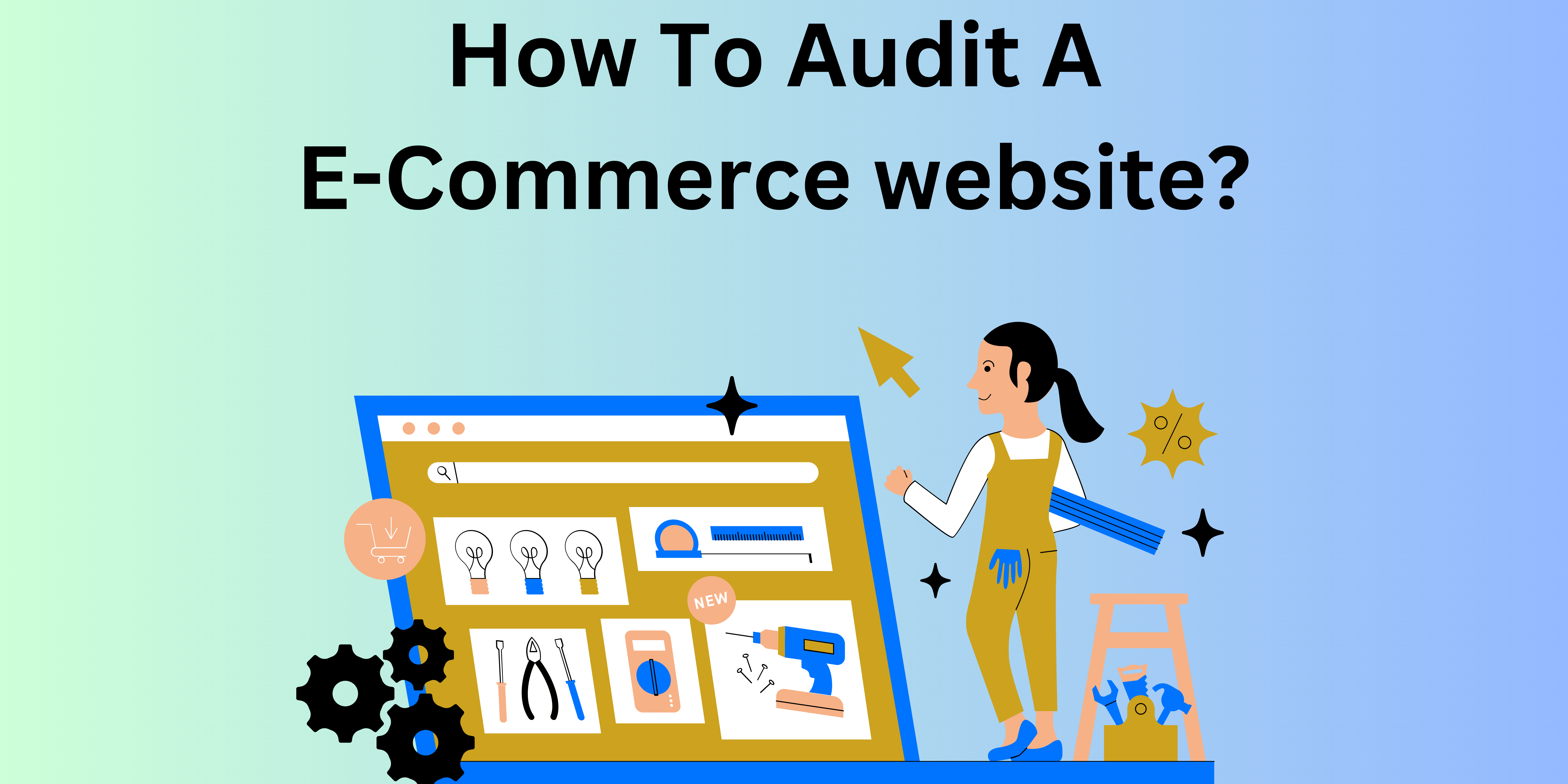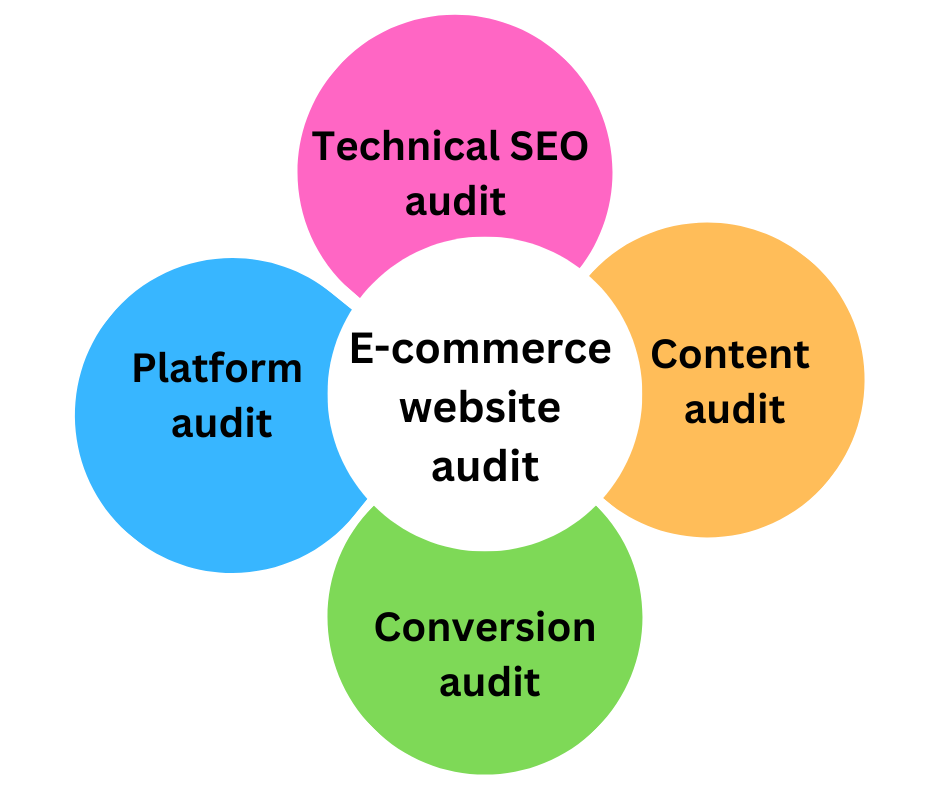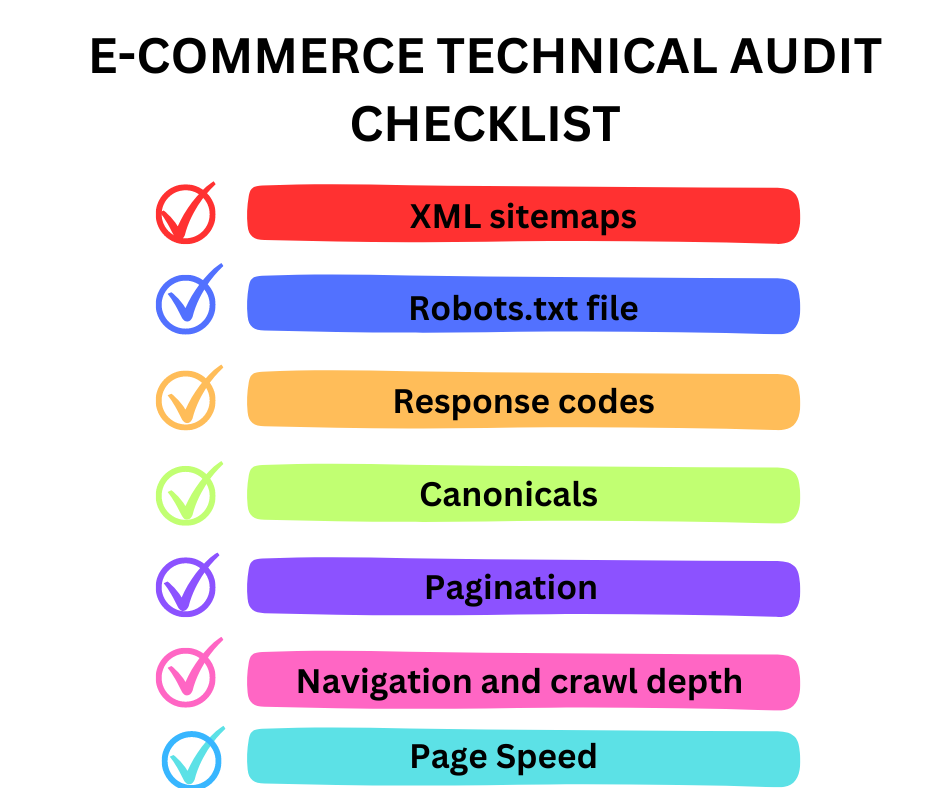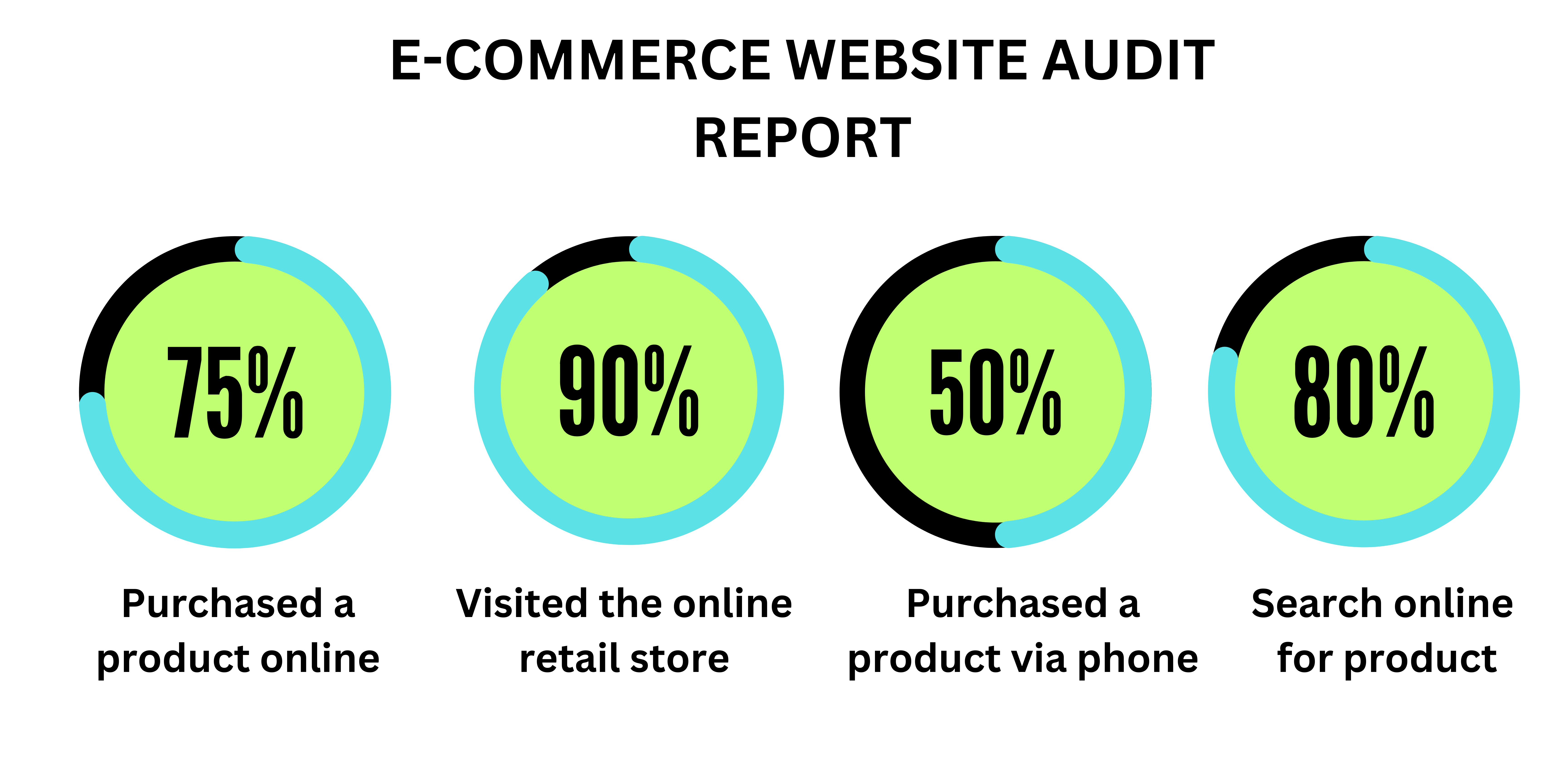An e-commerce website is a virtual store. Customers tend to visit those sites that run smoothly and do not have complex navigation. Making your site user-friendly with a higher SERP ranking is a crucial point.
An E-commerce SEO audit is the process of optimizing the site for better visibility, identifying the areas for improvement, and getting more organic traffic for the website.

Page Contents:
Benefits Of Conducting Audits For E-Commerce Websites
There are many reasons to audit your e-commerce website. Just as you check and renovate your physical outlet to attract customers. Similarly, updating the digital store with regular audits and optimization is essential. Audits report gives an overview of the performance of the business as well as detailed insights.
Even the finest of web developers makes mistakes. Regular audits will allow you to identify the loopholes in your websites. In addition, these audits make your websites user-friendly with smooth navigations. You rank higher on the SERP, increasing click-through rate and organic traffic.
Audits To Perform For E-Commerce Websites
Audits for e-commerce websites are a lengthy process. Lots of research with analysis is required for improvements. Auditing is the regular renewal of the virtual store. There are four types of audits you must perform for e-commerce websites.
- Content audit
- Technical SEO audit
- Platform audit
- Conversion audit
These four types of audits are enough to modify and improve your e-commerce SEO performance for search engines and users. Let us now discuss this one by one in detail.

1. Content audit:
The content audit provides the report on the factors like the assessment of keywords’ effectiveness, quality of the visuals, and other on-page elements. The content audit helps to increase click-trough-rate, enhance marketing, improve SEO performance, and better site design. The factors of content audit:
- Meta title and meta description:
These are the first thing a user sees, and the search engines crawl. During the audit, check the character limits that are 50-60 for meta titles and 160 for meta descriptions.
- Duplicate content:
E-commerce websites are not new to duplicate content. This is common because many similar products use the same instance. Many resellers use the same product description from the manufacturers. Avoid copy paste and try to write your product description.
- Broken links:
These can be many links that lead to inaccessible pages. While auditing, find all the internal and external broken links and fix the issues.
- Content quality:
E-commerce websites often have poor-quality content. Some sites do not even fulfill the minimum word count limit. Analyze the audit and search for thin content pages. Look for content that has no real value, poor readability, and irrelevance to the product.
- Keyword targeting:
Keyword targeting is a complicated task for an e-commerce website. Many similar products use the same keywords. Try to resolve this problem by using long-tail descriptive product descriptions.
2. Technical SEO audit:
Technical SEO is yet a considerably important part of an audit. E-commerce websites have many pages and domains interlinked. This makes it necessary to have a regular check on the technical part. How can technical SEO be improved for e-commerce websites during an audit? here are certain elements to be considered during an audit:

- XML sitemaps:
These are the key elements to get any site indexed in search engines. XML sitemaps contain the main canonicals and versions of your URL that can be crawled.
- Robots.txt file:
The robot.txt file allows the crawl to crawl the website so that it can index properly. If your site already has robot.txt, then make sure there is no blocking for crawlers.
E-commerce websites with this huge number of sub-directories and sub-domains, e-commerce websites should control the crawling budget. Crawling budgets refers to the number of pages to be crawled.
- Response codes:
These are the scores of response codes your pages are returning. If your site is getting a 200 response code, this means your site is actively visible on the search engine. If the response code is 4xx, then your page might be misspelled during linking.
If the code is 5xx, the reason can be your server is facing some issues. 3xx response codes indicate permanent or temporary redirects. 301 response codes specifically tell about permanent redirects. These issues can be solved, by closely evaluating the site audit report.
- Canonicals:
The HTML links that help search engines differentiate the version of the web page to be crawled and indexed are canonicals. E-commerce websites have multiple URLs for the same product.
The reason for these multiple URLs is that the products may be suitable for different categories. Using canonicals during audits may help you resolve this problem of duplicate content.
- Pagination:
Pagination is the process of converting long pages into manageable bundles. For example, an e-commerce platform like Amazon sells over 90,000 watches under this category. Here pagination will help the website to break this down into manageable bundles. During pagination keep a check on the issues related to pagination.
- Navigation and crawl depth:
Navigation is the most crucial part of an e-commerce website. A visitor will judge a website based on its navigation. If the navigation is too complicated or has errors this will be a negative point for the users.
Navigation helps visitors to identify and go to the relevant product category. Analyze the audit report and check that the navigation menu contains only the most important pages and categories.
The crawl depth of any e-commerce website should be not more than 3-4 clicks, the visitors should reach their desired pages as swiftly as possible. Pages placed deep down which are difficult to crawl will make your website bulky.
- Page Speed:
Of course, the fast world needs fast websites. e-commerce is at the boom because it saves time and energy. This is expected from the website’s page speed.
Pages taking time to load is a matter of concern as the website will have poor SEO performance. During the SEO audit of your e-commerce platform give attention to the page loading speed.
3. Platform audit
Checking whether the e-commerce platform you are using for your business is sufficient or not. the platform should fulfill all the requirements such as
- Better user experience
Better user experience includes factors like easy site navigation, platform speed, images, payments, checkouts, etc. Keep a check on these platform features for a better user experience.
- Mobile Optimization
Mobile optimization is an essential factor for platform audits as well as site audits. This is a mobile era and people use their mobile phones for shopping online rather than a desktop.
- Market trends:
The platform should follow current market trends and have enough potential to cope with upcoming trends.
- Cost:
If you are a small business using an expensive platform that is not giving worthwhile results, you should switch to the cheaper option.

4. Conversion rates audit:
An e-commerce website depends on conversion rates. The average conversion rate of an e-commerce website is 2-5%. The conversion rates audit helps to optimize the site for maximizing the user percentage to complete the call to action.
The call to action may be too big or too small, or the buttons might malfunction. If the landing pages or home pages have higher bounce-back rates. There is a need to figure out the problems.
The bounce-back rate is higher, which may be the reason that the site may be asking for unnecessary information or the onboarding process is complex.
Keep evaluating all these aspects of your sites while auditing your e-commerce website. Conducting regular audits at intervals of time is essential to boost your SEO performance and make your virtual store attractive.